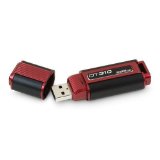Why can’t I buy a basic 4:3 1600×1200 LCD monitor any more for less than $380?
A 1080 monitor is “missing” 120 pixels of vertical resolution. In practical terms, this means you spend a LOT more time scrolling up and down when you browse the web, write a Microsoft Word document, edit your latest eBook, work on updating your website.
When it comes to computers, I’m a power user. Lots of applications running, Internet browsers, file transfer applications, e-mail, office applications (Word, PowerPoint and Excel), graphics and website development software, even video conferencing from time to time, all at the same time. It takes not only a lot of CPU and RAM to run all of this, but it takes a lot of desktop real-estate too, which is why I need high-resolution monitors. The rise of High Definition television (HD or 1080p) and mobile devices has brought about an odd situation. Six years ago, you could get a 1600×1200 LCD/LED monitor for around $189. I bought two Samsung monitors at that price. One of them failed recently, and I went shopping for a new monitor with the same resolution, only to find that I had to choose between medical-industry-grade monitors at $1200+, new monitors at $450+ (if I could find them), refurbished monitors for around $200, or settle for a 1980×1080 monitor.
I was flabbergasted that you just can’t buy a new, standard 1600×1200 monitor these days for under $300.
After some research, I discovered that the people that make monitors aren’t interested in making PC monitors any more. They can take the same materials and produce an HD television at three times the price. A basic 27-inch 1920×1080 LCD monitor will run you $109 US. A 27-inch 1920×1080 HD-TV will run you $349 US. Manufacturers add a tuner component, but otherwise, the HD-TV is the same materials, components, screen-size and electronics. Because it’s an HDTV, you’re willing to pay more and so you do, and the manufacturers realized that at a 250% markup, HD-TV’s are more profitable, so they retooled their factories to turn out 1920×1080 screens for HD-TV’s. Even better, they can carve up what could have been a $109 27-inch screen into a dozen iPhones, charge $100 for each iPhone screen, and make at least 600% markup with the same materials and production costs. Thus, today’s monitor manufacturers see PC monitors as “unprofitable” by comparison to HD-TV’s, mobile phones and tables, so they refuse to put anything more into a PC monitor than is required to get a consumer to buy it. Since they converted their factories for HD TV’s, they can only crank out 1080 PC monitors now. Setting up a production line to turn out a 1600×1200 monitor may be possible, but they see making a smaller profit as a financial loss. Since consumers are unaware that 1600×1200 used to be the standard monitor… Continue reading
The term computer appliance is a generic term for a class of computer devices that come pre-packaged and pre-wired from the factory with special features and functionality pre-configured and ready to use with only minimal setup. There are several types of devices that fall into this category such as storage appliances, network appliances, security appliances, anti-virus appliances and so forth. You can find this new tutorial I’ve written in my Tutorials section, under Computers as computer appliances.
I was curious just how big the biggest, largest USB flash drive available would be. This is one of those fun sorts of searches that tells you how far technology has advanced. So far, looks like Kingston’s 256GB USB flash drive is as large as it gets, for the time being. The Kingston DataTraveler 310 is a USB Key with 256GB of storage (pictured below and sold on Amazon). While I can find larger USB keys on Google, I can’t find them from a reputable memory or computer dealer.
Say goodbye to the old floppy disk. Does anybody carry them any more?
MAGICAL JELLY BEAN KEYFINDER
FROM: Magical Jelly Bean Software
(http://www.magicaljellybean.com/keyfinder/)
PRICE: FREE
SUPPORTED OS: SEE BELOW
RECOMMENDATION: Highly Recommended
Sometimes you have to recover the key to your Microsoft Windows OS, or your Windows Office install, or Photoshop etc. The Magical Jelly Bean Keyfinder extracts license keys for you. Even when you don’t, it’s a good idea to run this software, save the keys to a file, print the file and store it with your installation CD’s, just in case.
Jelly Bean will extract, from the registry:
- Windows 95, 98, ME, 2000, XP, Vista 7 license keys
- Windows Servers 2000, 2003, 2008 license keys
- Office XP, 2003, 2007 license keys
- Even extracts license keys from the registry hive of any drive connected to the computer. Pull out the hard drive from a blown computer plug it into a working computer and recover the keys!
- Save as .txt or .csv
Jelly Bean is free (as in free beer) and is open source and I highly recommend you download it, extract your keys to a file, print the file and store it somewhere safe with your installation CD’s, just in case.
I know, I know, I’ve warned you twice. But its that important.

